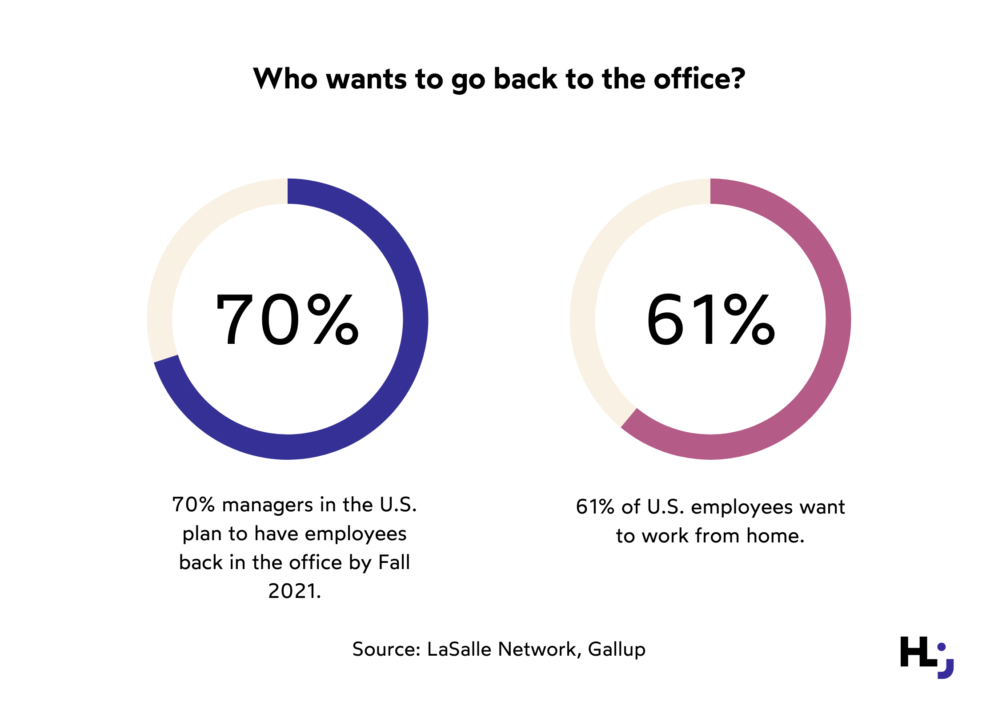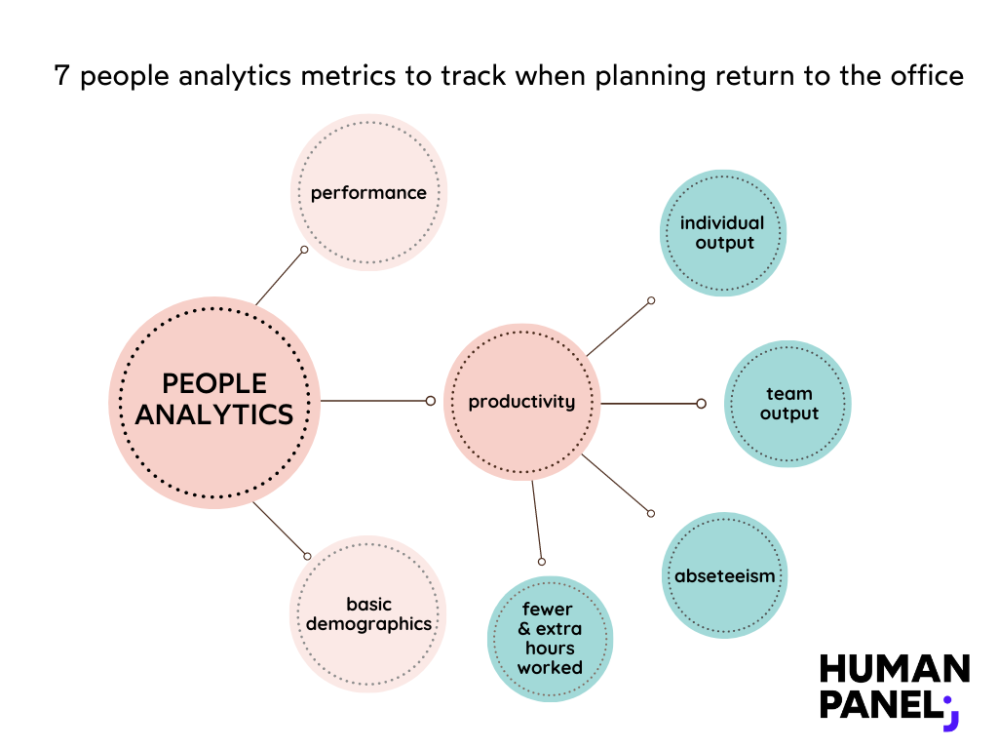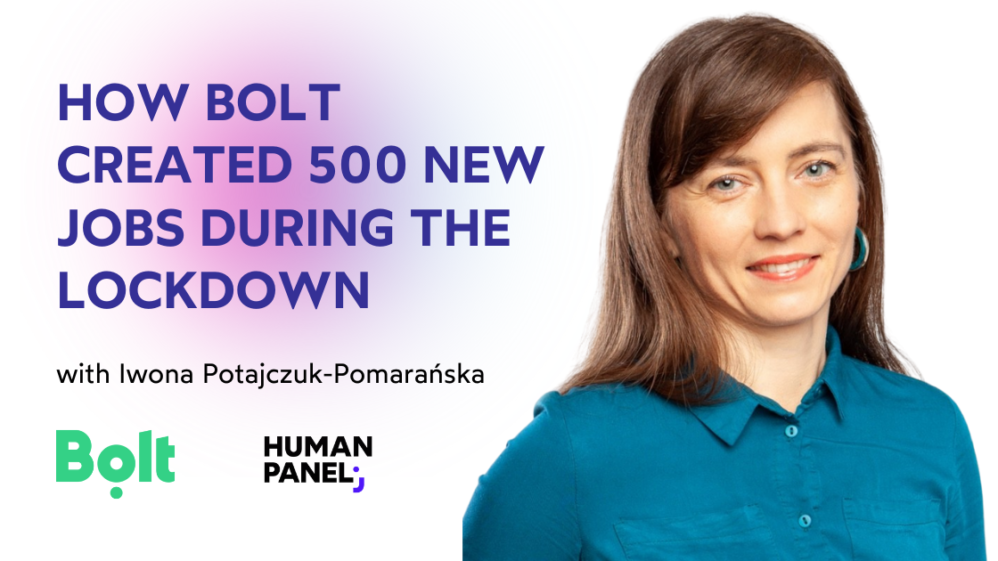7 essential people analytics metrics to plan your return to the office

“There’s no going back to the old model of work,” say experts when asked about the future of work. Returning to the office is proving more complicated than the abrupt shift to remote work we saw in 2020. Here is how people analytics can help you figure out how to return to the office – and whether you should return to the office at all.
Should I return to the office, adopt a hybrid model, or switch to remote work altogether? That’s the question many business leaders are racking their brains over. They realize that even with the vaccine, Covid-19 might not give up that easily yet.
Apple and Google recently announced a partial return to the office in September but already postponed it due to the onset of the Delta variant of the virus. They also said they would require employees to get vaccinated when they return to the companies’ campuses.
And although more than 70% of business leaders plan to bring their employees back to the office part-time this fall, more than half of American workers still work from home today.

People analytics to determine what works best
“There are companies that have fully switched to remote work and have closed their offices to cut costs. Others have opted for a hybrid model that has worked amazingly well. Now they do not want to upset the fragile balance. They also do not want to lose potential talent, and flexibility is a must to be competitive in the marketplace today,” says Daniel Aduszkiewicz, CEO and Co-Founder of Human Panel.
But how do you know what’s best for your business? Proving that something has worked elsewhere does not automatically entail that it will work for you. So before you announce that you are bringing all employees back to the office (or eliminating the office altogether), use people analytics to work out your company’s goals and needs.
People analytics collects data about the people who work for you. Such solutions – like the one offered by Human Panel – structure and visualize the data to give you a clear view of your workforce. This way, you can take informed action instead of making decisions based on a “gut feeling.” See how it works and what we can do to help you address your workforce challenges. Request a free and non-binding demo and see the power of people analytics. Just ten seconds of your time can change your HR management forever.
Ready to start people analytics with Human Panel?
Below are 7 essential metrics you will need to track if you want to make an informed decision about the future of your workforce.
Basic demographics
This metric is vital for understanding who works for you and predicting their work preferences. Are there more men or more women in your company? How old are they? Where do they primarily live – downtown or in the suburbs?
This data can be used to determine who is more likely to want to return to the office (parents of school children, young people who live downtown) and who would probably prefer to work remotely.
Performance
Performance means the ability to meet the expectations of the business measured by the level of success against pre-agreed criteria, such as KPIs or objectives. It’s how someone works to accomplish tasks successfully.
It also includes employee communication, their willingness to collaborate, and their general attitude to work.
It would be ideal if you could compare your employees’ performance before and during the pandemic and their performance in the office and at home. Hence, you can determine whether there have been any changes in the way people fulfill their tasks. It will allow you to compare the results with the market benchmark.
Productivity
Productivity is the ratio of the output to the input, i.e., the ratio of what you produce to the hours worked. The aim is to reach the highest possible outcome with the minimum amount of input. It is a key determinant of business performance, and its growth is critical if you want to increase your profitability.
You can measure employee productivity both in the office and remotely and compare the results with historical data (if you have it).
Note, however, that sometimes the results can be inconclusive. For example, a recent survey of one undisclosed IT company found that employees who worked from home achieved the same results but spent more time on their tasks than those in the office. So productivity at that company decreased.
On the other hand, Google’s own internal surveys of engineers suggest that Googlers now feel just as productive working from home as they did before the Covid-19 pandemic. Still, Google plans to bring most employees back to the office – which does not mean you have to do it too.
When measuring productivity, it makes sense to break down this metric further. You can ask some additional questions about individual and team output, absenteeism, and overtime.
Individual output
Here, you might want to learn whether your employees are completing fewer tasks during their day than they used to. Or perhaps their output is extremely high? Both of these results can be worrisome and lead to the eventual drop in productivity and, in consequence, decrease in your company’s profitability.
Team output
Are teams achieving their goals? If not, why? Is it because employees are not contributing enough, or are there other factors? Consider that here measuring the output of a particular project team can be more efficient than looking at the whole department due to market fluctuations.
Fewer hours worked/more hours worked
Do your employees work fewer hours a day than they used to? Are they always online? Do they answer emails outside of work hours? With this metric, you can keep an eye on your employees’ well-being and limit the risk of burnout.
Absenteeism
This metric allows you to see if your employees are taking more (sick) leave when working remotely. If this is the case, it may indicate that they feel less engaged or they are even looking for a new job.

People analytics for your company
Of course, these are not all the metrics that can contribute to the decision-making process about returning to the office. However, the truth is that the more data you collect, the better informed you are. It gives you a global perspective, which is helpful. At the same time, it lets you go deeper and understand people’s needs better.
In any case, your decision on returning to the office should be based on data analysis. And data on your workforce should be crucial because it’s the people you employ who keep your business growing and your revenue coming in. That’s why it’s necessary to figure out where they perform best – at home or in the office.
If you’d like to learn more about people analytics, contact us at Human Panel. We will be happy to find a solution that works best for your business.




